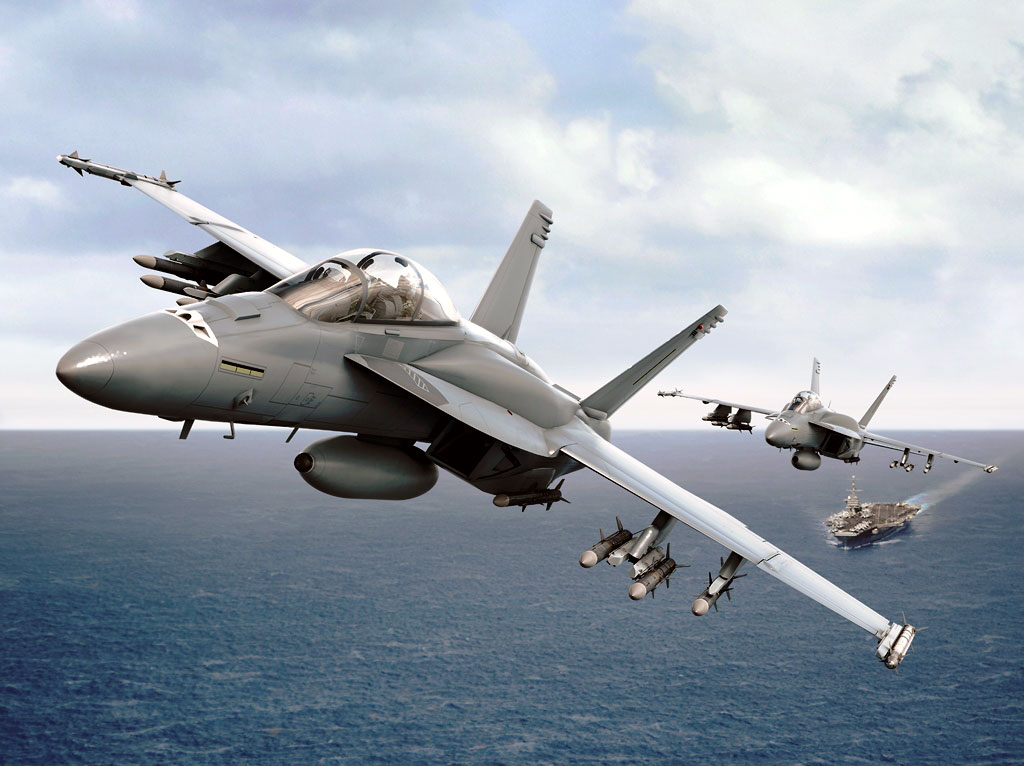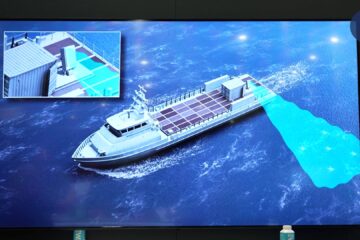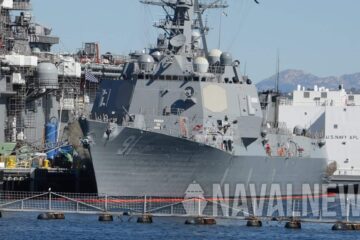Block III is the most advanced version of the Super Hornet and exceeds fourth-generation fighter capabilities. U.S Navy capabilities include the advanced cockpit system with a 10-inch-by-19-inch touch screen display, enhanced networking, open mission systems, reduced radar signature and a 10,000-hour airframe.
Boeing press release
Capt. Jason “Stuf” Denney, U.S. Navy F/A-18 and EA-18G program manager, said:
“The fleet needs capabilities to keep its edge. Getting the first operational Block III in our hands is a great step forward in supporting our capability and readiness goals.”
Block III’s new adjunct processor translates to a fighter that will do more work and in far less time increasing a pilot’s situational awareness. The jet is ready to receive apps-based solutions that will allow upgrades to the aircraft throughout its life span.
“We invested in Block III technology and developed the capabilities in partnership with the U.S. Navy to meet its emerging requirements,” said Jen Tebo, Boeing vice president of F/A-18 and EA-18G programs. “The hardware upgrades are complete. Today we are maximizing the open hardware and software and developing the apps to keep Block III ahead of future threats. We are giving Navy pilots the tools to make the fastest and most informed decisions possible now and in the future.”
Boeing will continue to deliver Block III capabilities to the Navy through the mid-2030s from three lines. One new build production, and two Service Life Modification lines extending the life and eventually upgrading Block II Super Hornets to Block III. The first aircraft delivered will complete the U.S. Navy flight test program before deploying to a squadron.
-End-
Naval News comments: About F/A-18 Block III Super Hornet

Boeing received a whopping $4 Billion U.S. Navy contract in March last year for multi-year procurement of 78 F/A-18 Block III Super Hornet strike fighters (61 single-seat E and 17 two-seat F), delivered through 2024.
The F/A-18 Block III conduced its first flight in May 2020. Its configuration adds capability upgrades that include enhanced network capability, longer range, reduced radar signature, an advanced cockpit system and an enhanced communication system. Boeing started converting existing Block II Super Hornets to Block III this year. The fighter’s life will be extended from 6,000 hours to 10,000 hours.
Inside the cockpit, the advanced cockpit system has replaced the buttons and knobs, similar to a large tablet. The new 10-by-19 inch touchscreen display provides the pilot with the capability to see, track and target multiple long range targets generated by the common tactical picture.
The block II IRST will be able to detect threats at long range without having to depend on radar which may be jammed. The block II IRST will generate a multi-ship, common tactical picture at long range, allowing the Super Hornet to operate as a smart sensor node on the network.
The Block III Super Hornet was set to feature shoulder mounted conformal fuel tanks. They could carry 3,500 pounds of additional fuel and reduce drag, allowing the aircraft to operate longer, go faster and/or carry more weight. This option has been dropped however.






